By Michael Rodriguez
Last week, we took leave of McMurdo Station by helicopter, to New Harbor, an additional research site about 50 miles away. We stayed for three nights at an established field camp there.
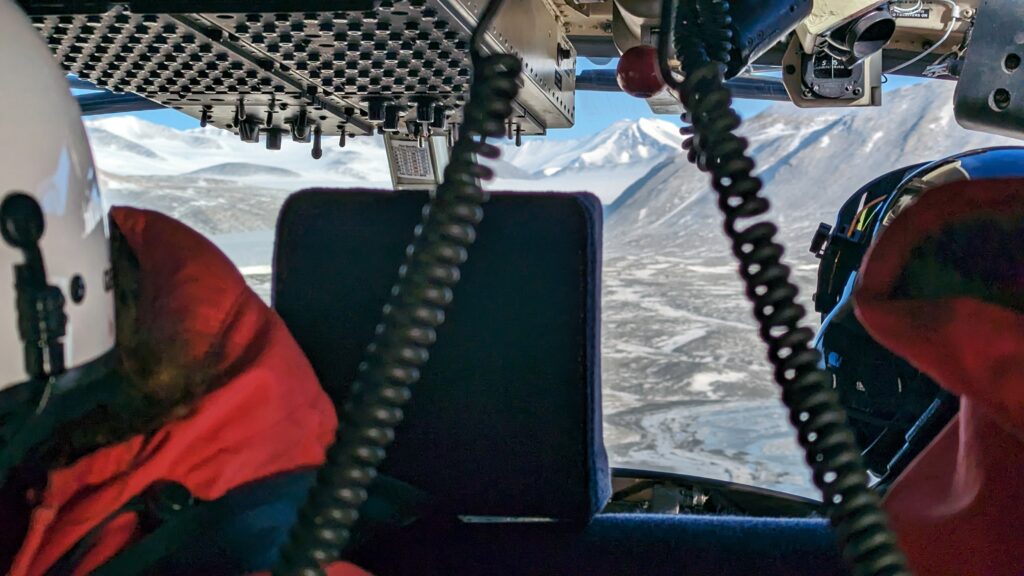
Approaching our field camp.
Our flight was entirely over sea ice, which extends beyond the horizon. The sea ice has been endlessly fascinating to me and it was such a joy to be able to see it from the air. I found this area strikingly beautiful:

An area of drift ice from last summer that refroze this past winter. Drift ice is composed of many ice floes, individual plates of sea ice.

Arrival at New Harbor. We were lucky to have had such a clear day for our flight.
After unloading gear into our hut, we got right to work creating a dive hole in the ice. The first step was to use a battery-powered 10″ diameter auger to remove the first 3 feet of ice. Then a hole was drilled all the way through to the water, 9 feet below the surface. A metal coil through which a hot fluid was circulated (known as a hot finger) was inserted into that hole to melt the ice until the hole was wide enough to dive. We all took turns refueling the hot finger every three hours for about 22 hours.
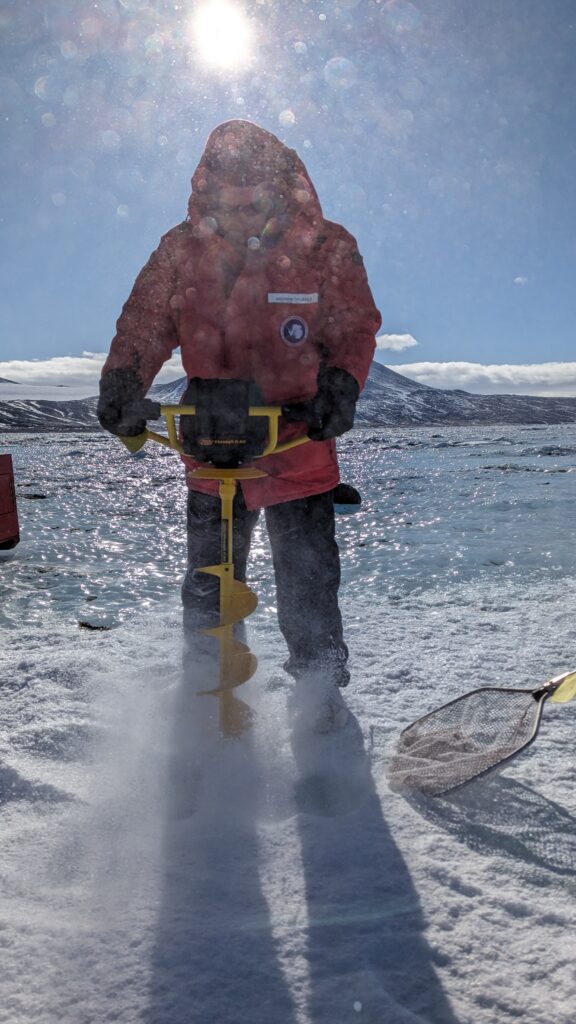
Andrew working on drilling out the diving hole
As the hot finger ran, we had time for some cards…

and exploration.

An iceberg can be seen on the horizon which appears as a sharp white line. One sometimes feels as if they are on an alien planet here. On land, there are absolutely no detectable signs of life- no lichens or moss growing on the rocks, let alone some sort of little shrub, no birds in the sky, no burrows of little animals, nothing. The only living things are the microbes that live in the perpetually parched and frozen soil.

A pressure ridge created by the sea ice being shove against the shore.
The next afternoon, the dive hole was ready and the divers got to work.

Steve keeps a watchful eye on Jacob and Rowan as they prepare for their first dive here. Diving without the warmth of a dive hut at about 0F (-18 C) presents special challenges. Moisture from the divers’ breath can easily ice over their masks and clog the lines that supply the air from their tanks and are used to inflate their dry suits.
After sleeping in the warmth of the hut on the first night, several of us moved our cots and sleeping bags into the shelter we had set up near the dive hole for a night of sleep on the ice. As we all settled down and got quiet to fall asleep, we were alarmed to hear continuous cracking and popping sounds coming from the ice below us. Reassuring ourselves that the ice was 9 feet thick, we managed to drift off.
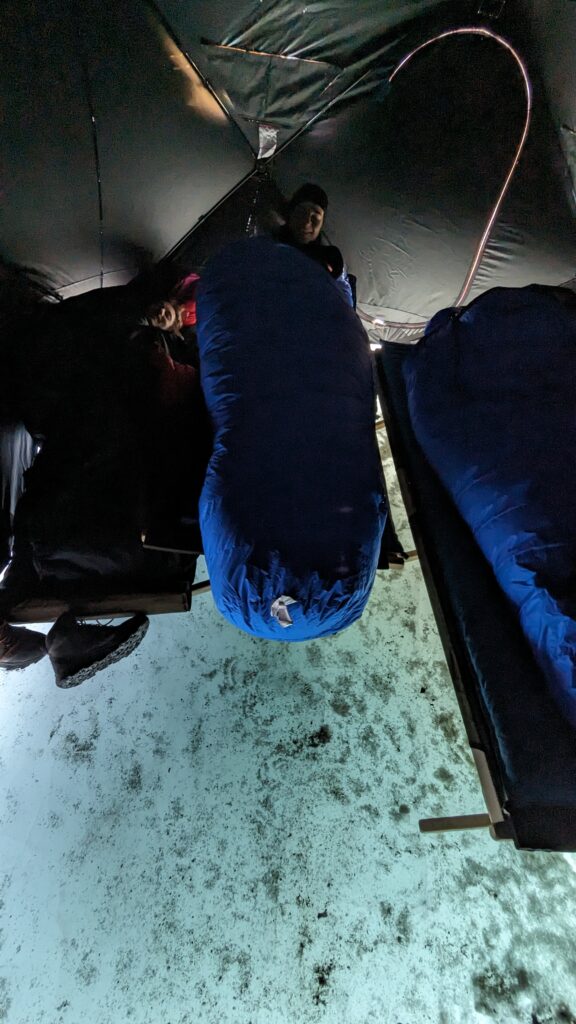
Beautiful blue light was transmitted into our shelter through the ice. (At this time of year, the sun does not set, of course.)
Early the next morning, we were awakened by the sound of repeated, deep exhalations. A Weddell seal had discovered the dive hole and was using it to breathe. It returned repeatedly over the course of several hours, taking about 1-1/2 minutes to complete its breathing exercises each time.

Weddell seal, breathing. They breathe through their nostrils which open and close like valves, allowing them to keep water out while they are diving.
After making our way across the ice to the hut for breakfast, we later returned to find our friend laying comfortably nearby. He spent the next 8 hours there.

In contrast, to the land, the sea below the ice is teaming with life, some of which makes an occasional trip to the surface.
The next day, the divers continued their work below, collecting samples and completing other tasks for their research.
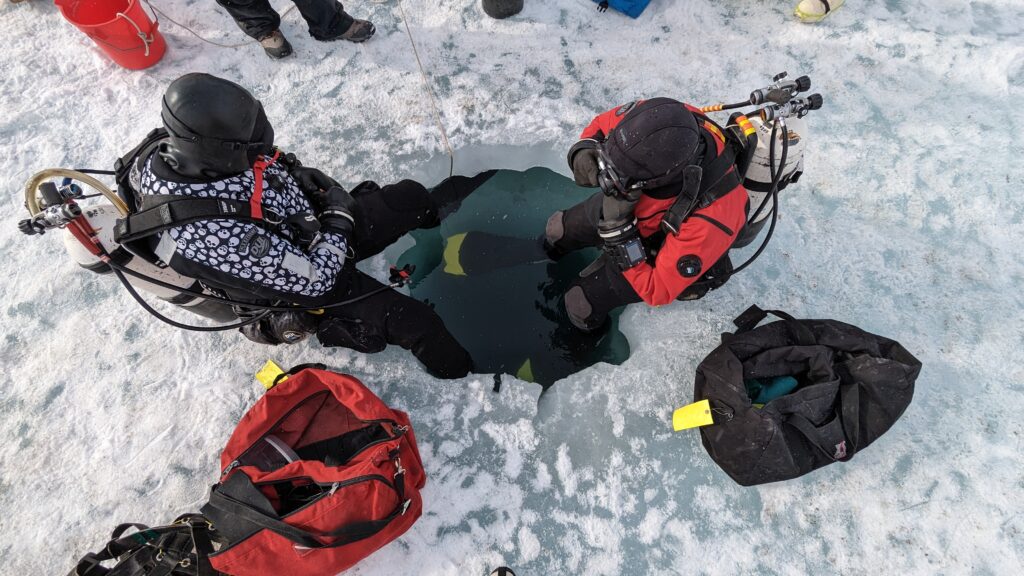
Steve and Andrew preparing for a dive.
After diving was complete, everyone warmed up, had some snacks, and then set off on a hike to Commonwealth Glacier.

Explorers of a remote and alien world
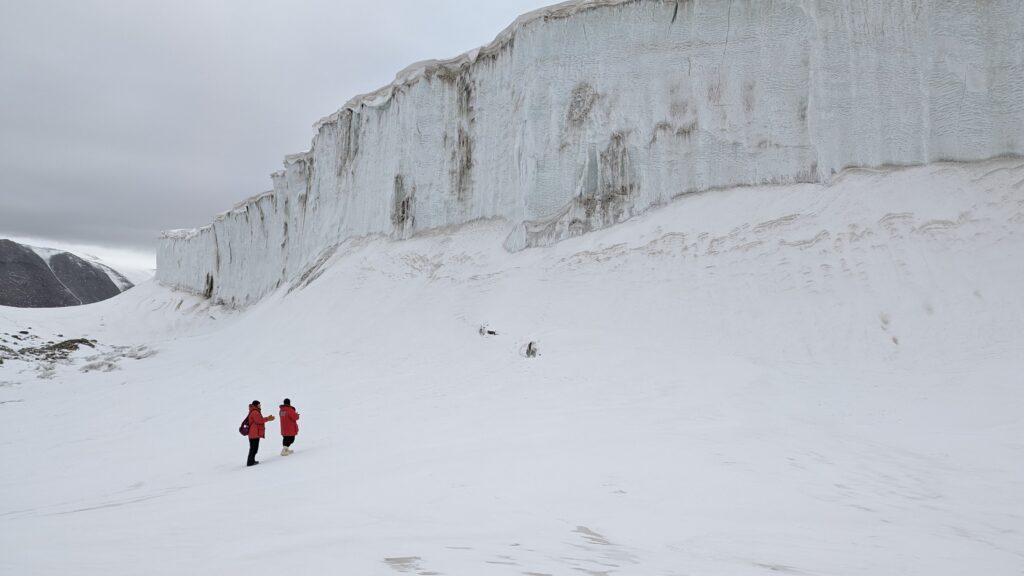
Commonwealth Glacier is at the edge of the McMurdo Dry Valleys, a vast part of Antarctica that receives 1-4 inches of precipitation (water equivalent) per year, classifying it as a desert. This is the front edge of the glacier.
We returned back to our hut at 10 p.m. One thing you do not have to worry about here at this time of the year is the sun setting while you are on your way back from somewhere.
After dinner, I decided to spend another night on the ice rather than drag my stuff back to the hut. I was awoken once again, early the next morning, by deep exhalations. As I stood near the dive/breathing hole, I could hear the other-worldly liquidy-sounding clicking and whistling calls of the seal as it swam below the ice before emerging to breathe.

After just two days, the dive hole had already begun to freeze over. Weddell seals scrape the ice with their teeth to keep their breathing holes open.
The next day, we packed up and made our return trip to McMurdo Station. It was a great privilege and joy to visit such a remote and beautiful place that few others have ever seen.
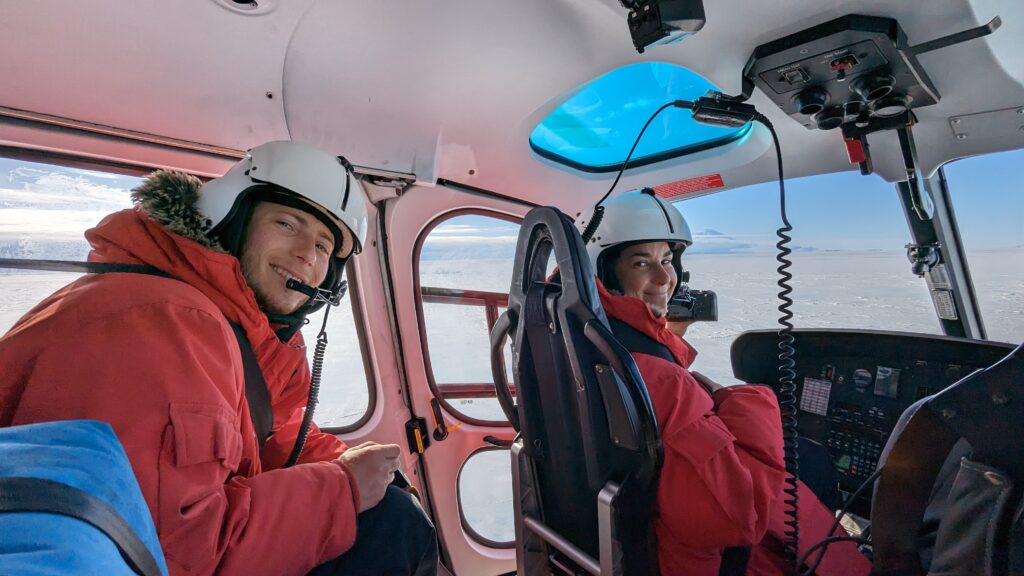
Jacob and Rowan enjoying our beautiful return flight

Because it is dangerous for divers to fly immediately after diving because the change in altitude can cause decompression sickness (the bends), we flew back below 500′ altitude, giving us a beautiful, low angle view of the landscape.

